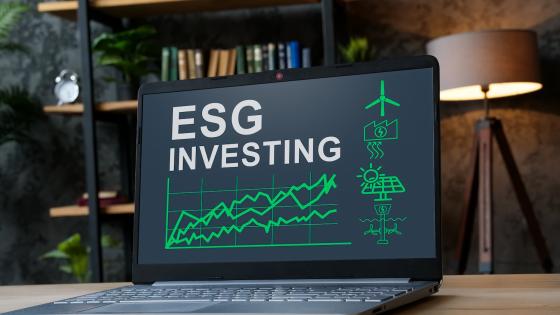In recent years, corporate executives, scholars, government officials, and the general public have paid ever increasing attention to environmental, social, and governance (ESG) issues. In asset management, ESG investing has grown popular in many parts of the world (Brandon and Krueger 2023, Pástor et al. 2023, Parise and Rubin 2023). However, along with the growth of ESG investing, an anti-ESG movement has emerged. The wave of anti-ESG activities has led to the introduction of over 156 anti-ESG bills in 37 US states in the first half of 2023 alone, according to Forbes. Arguments of the anti-ESG movement include, among others, the risk of greenwashing and low investment returns.
To improve our understanding of the merits and downsides of ESG and the backlash against it, it is important to better understand whether firms can ‘do well by doing good’. That is, can corporate investments in ESG activities help firms achieve higher profits and increase shareholder value? Although there is an expanding corpus of literature on ESG, significant knowledge gaps remain regarding this question. One avenue of research that has seen a lot of progress recently investigates whether ESG efforts could affect firm value through the discount rate channel, whereby shareholders adjust their required rate of return in consideration of firms’ performance in ESG-related practices (e.g. Heinkel et al. 2001, Hong and Kacperczyk 2009, Krueger 2015, Albuquerque et al. 2019, Pástor et al. 2022, Pedersen et al. 2021). In contrast, there is less evidence on whether ESG efforts by firms affect their sales, i.e. the cash flow channel of ESG activities. Moreover, research on the cash flow channel of ESG activities is inconclusive: some studies find positive effects of ESG, while others find negative effects (e.g. Gillan et al. 2010, Servaes and Tamayo 2013, Di Giuli and Kostovetsky 2014, Dai et al. 2021, Schiller 2018). In addition, even if such a relation exists, it could be due to omitted variables or the causality could be reversed.
In a recent paper (Meier et al. 2023), we focus on firms’ environmental and social (E&S) activities to shed light on the cash flow channel. Specifically, we examine the implications of firms’ E&S activities on consumer demand in retail markets. This investigation employs Nielsen Retail Scanner Data, which provides frequent and granular information on the sales price and volume of individual products in local markets.
With retail market data, we can examine products that are very similar and that are sold in the same location at the same point in time, by businesses with varying degrees of E&S initiatives. For instance, within the same county and year, we can compare companies’ sales within the product category of “snacks–potato chips” (which is distinct from the product categories of “snacks–corn chips” or “snacks–tortilla chips”). If shoppers are mindful of the social and environmental repercussions of what they buy, we would expect these factors to influence their selection of goods and services. Thus, the appeal of a product could be tied to its E&S quality, an attribute that should align with the E&S ratings of the company that owns the brand. Such an apples-to-apples comparison allows us to isolate the effect of brand owners’ perceived E&S quality from other potential drivers of consumer demand.
Using retail scanner data from 2008 to 2016, our analysis reveals a connection between a brand owner’s E&S rating and product sales: on average, a one standard deviation improvement in a brand owner’s E&S score translates into a 9.2% rise in next-year sales for the firm’s products relative to the same type of products sold by other firms within the same county.
By comparing a firm’s product sales across counties, we also uncover geographic differences in consumer preferences and the role of local market competition. In particular, we find that the beneficial link between E&S scores and a company’s sales is especially strong in wealthier counties and those where the Democratic Party receives a higher vote share. These results align with the idea that the political inclinations and economic status of consumers play a part in their choice to purchase from businesses that demonstrate greater social responsibility. Moreover, a firm’s product sales in a county are negatively related to the E&S performance of local rivals that sell the same type of products in that county. This finding indicates that consumers choose between alternative products based on the relative E&S performance of the companies in the market, thereby creating competitive pressure on firms to improve their E&S standards.
Another advantage of our use of retail market data is that we can better address the question of causality and distinguish firms that ‘do well by doing good’ from those that ‘do good because they are doing well’. In our second set of tests, we analyse monthly sales data and demonstrate that a firm’s sales tend to drop following, but not before, the release of adverse reports about its E&S activities.
In our final set of tests, we use a sequence of significant natural and environmental catastrophes as exogenous events that heighten the awareness of E&S issues among local consumers. By assessing the relevance of these events to local consumers via geographic proximity, our findings indicate an increased sensitivity of consumer demand to brand owners’ E&S ratings post-disasters, especially when we focus on environmental and community-related ratings. This effect dissipates as the distance to the disasters increases and as time lapses.
In summary, our study demonstrates that a firm's environmental and social initiatives have a tangible impact on consumer demand, suggesting a cash flow effect of ESG. The granularity of our data, which spans firms, product types, counties, and months, enables for a more precise like-for-like comparison, thus diminishing the chance that overlooked factors skew our findings. Additionally, we identify key socioeconomic elements that explain the varied preferences of customers for products from firms that are more conscientious about their social and environmental responsibilities.
References
Albuquerque, R, Y Koskinen and C Zhang (2019), “Corporate social responsibility and firm risk: Theory and empirical evidence”, Management Science 65(10): 4451–4469.
Brandon, R G, and P Krueger (2023), “Institutional investors and responsible investing”, VoxEU.org, 5 April.
Dai, R, H Liang and L Ng (2021), “Socially responsible corporate customers”, Journal of Financial Economics 142(2): 598–626.
Di Giuli, A, and L Kostovetsky (2014), “Are red or blue companies more likely to go green? Politics and corporate social responsibility”, Journal of Financial Economics 111(1): 158–180.
Gillan, S, J C Hartzell, A Koch and L T Starks (2010), “Firms’ environmental, social and governance (ESG) choices, performance and managerial motivation”, Working paper, University of Texas at Austin.
Heinkel, R, A Kraus and J Zechner (2001), “The effect of green investment on corporate behavior”, Journal of Financial and Quantitative Analysis 36(4): 431–449.
Hong, H and M Kacperczyk (2009), “The price of sin: The effects of social norms on markets”, Journal of Financial Economics 93(1): 15–36.
Krueger, P (2015), “Corporate goodness and shareholder wealth”, Journal of Financial Economics 115(2): 304–329.
Meier, J M, H Servaes, J Wei and S C Xiao (2023), “Do consumers care about ESG? Evidence from barcode-level sales data”, CEPR Discussion Paper No. 18379.
Parise, G and M Rubin (2023), “Smoke and mirrors: A look inside ESG fund portfolios”, VoxEU.org, 15 October.
Pástor, L, R Stambaugh and L Taylor (2021), “Sustainable investing in equilibrium”, Journal of Financial Economics 146(2): 403–424.
Pástor, L, R Stambaugh and L Taylor (2022), “Dissecting green returns”, Journal of Financial Economics 146(2): 403–424.
Pástor, L, R Stambaugh and L Taylor (2023), “Green Tilts”, VoxEU.org, 13 August.
Pedersen, L H, S Fitzgibbons and L Pomorski (2021), “Responsible investing: The ESG-efficient frontier”, Journal of Financial Economics 142(2): 572–597.
Servaes, H and A Tamayo (2013), “The impact of corporate social responsibility on firm value: The role of customer awareness”, Management Science 59(5): 1045–1061.
Schiller, C (2018), “Global supply-chain networks and corporate social responsibility”, Working paper, Arizona State University.







